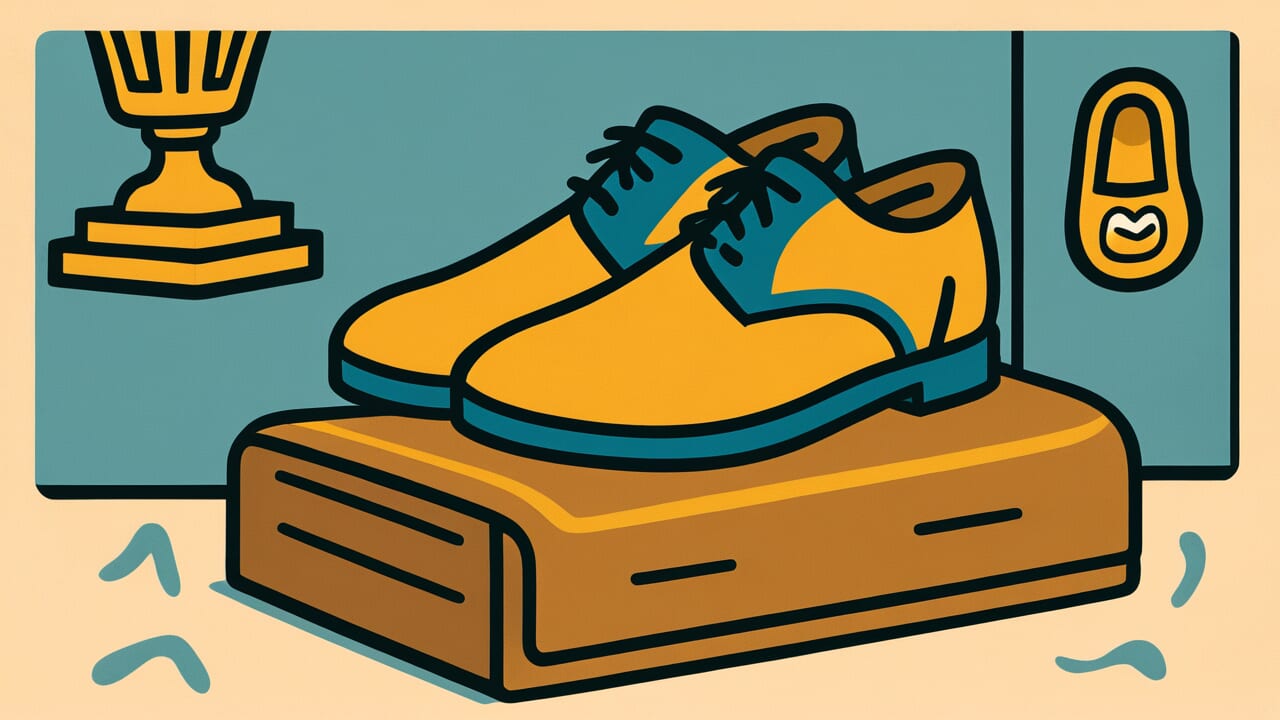How to Read “Crowns and shoes are not stored together”
Kanri wa onajiku osamezu
Meaning of “Crowns and shoes are not stored together”
This proverb means that people of different ranks or positions should not be treated the same way.
Just as crowns and shoes are stored separately, people with very different social positions or roles should each receive appropriate treatment.
This saying is used when discussing the need to maintain clear distinctions in rank and role within organizations or groups.
For example, it applies to relationships with clear hierarchies, such as leaders and regular members, teachers and students, or masters and servants.
It serves as a warning not to blur these important distinctions.
In modern times, this expression sounds hierarchical and class-based.
However, it originally conveyed wisdom about maintaining order.
Today it’s understood as teaching the importance of putting the right person in the right place and treating each position appropriately.
Origin and Etymology
This proverb is believed to come from ancient Chinese classics.
“Kan” refers to a crown worn on the head, “ri” means footwear worn on the feet, and “osamezu” means not storing them in the same place.
In ancient China, there were strict rules of etiquette about how to handle things you wore.
The head was considered the most noble part of the human body, while the feet were seen as the lowest part.
Therefore, storing a crown for the head and shoes for the feet in the same box or shelf was considered disrespectful.
This way of thinking reflected Confucian philosophy about maintaining clear distinctions between high and low, not just a method of organizing belongings.
The principle of not mixing noble things with base things was expressed through concrete daily habits.
After this saying came to Japan, it evolved from its literal meaning about storage methods.
It became a proverb about how to treat people of different ranks and positions.
The physical relationship between head and feet came to represent social hierarchies.
The very structure of the phrase deeply reflects traditional East Asian values that emphasized hierarchical order.
Usage Examples
- Having executives and new employees attend the same training might violate the principle of “Crowns and shoes are not stored together”
- A master and disciple debating as equals? Someone should remember “Crowns and shoes are not stored together”
Universal Wisdom
This proverb has been passed down through generations because it addresses a universal challenge: the difficulty of maintaining order in human society.
The question of how to handle hierarchies and role divisions that naturally emerge in any group is a timeless human theme.
Humans have both a desire for equality and a need for distinctions and hierarchies.
Our ancestors learned from experience that mixing everything together and flattening it out actually creates confusion.
Just as the human body naturally has a top and bottom, they recognized that society also has natural distinctions.
What’s interesting is that this proverb doesn’t simply justify discrimination.
Instead, it teaches about “appropriate treatment” according to each position.
Crowns have their own importance, and shoes have theirs.
It’s not about which is superior, but about how overall harmony is maintained when each thing is placed where it belongs.
This wisdom teaches us why clarifying roles is important in organizational management and human relationships.
Ambiguity sometimes seems kind, but it actually makes responsibility unclear and can make people anxious.
When AI Hears This
The wisdom of storing crowns and shoes separately is practicing what information theory calls “two-dimensional optimization of access frequency and risk.”
The essence of this problem isn’t just physical separation, but the principle of not putting assets with different properties into the same risk pool.
Information systems classify data as “hot,” “warm,” or “cold.”
For example, Google’s data centers store frequently accessed data on fast but expensive SSDs, while rarely accessed important data goes to slower but more secure separate facilities.
What’s crucial here is that items accessed more frequently face more exposure to physical wear and human error.
Shoes are touched daily, so they have higher probability of being stolen or damaged.
Crowns are rarely touched, so storing them together means the shoes’ risk propagates to the crown.
This has the same structure as investment theory’s “correlation coefficient 1.0 risk.”
Stocks and bonds are held separately because their values move differently.
Similarly, separating crowns and shoes is “cutting off risk correlation on the time axis of usage frequency.”
Spatial separation ensures temporal risk independence.
This isn’t just about not losing both in one disaster, but a design philosophy that blocks the accumulation of small daily risks.
Lessons for Today
This proverb teaches us today the importance of understanding the difference between making distinctions and discriminating.
Treating everything equally isn’t always fair.
Sometimes true fairness comes from appropriate responses based on each person’s characteristics and role.
Whether at work or at home, recognizing differences in position and role isn’t cold or unkind.
Rather, clarifying each person’s scope of responsibility builds relationships of mutual respect.
Bosses have their role, subordinates have theirs, parents have theirs, and children have theirs.
Acknowledging these differences forms the foundation of healthy relationships.
In modern society, we can reframe this less as formal hierarchy and more as functional role division.
Project leaders and specialists, those who teach and those who learn—roles change depending on the situation.
What matters is clarifying roles in each moment and having everyone do their best in their position.
You too should value your own role while respecting others’ positions.
That’s the first step toward building harmonious human relationships.



Comments